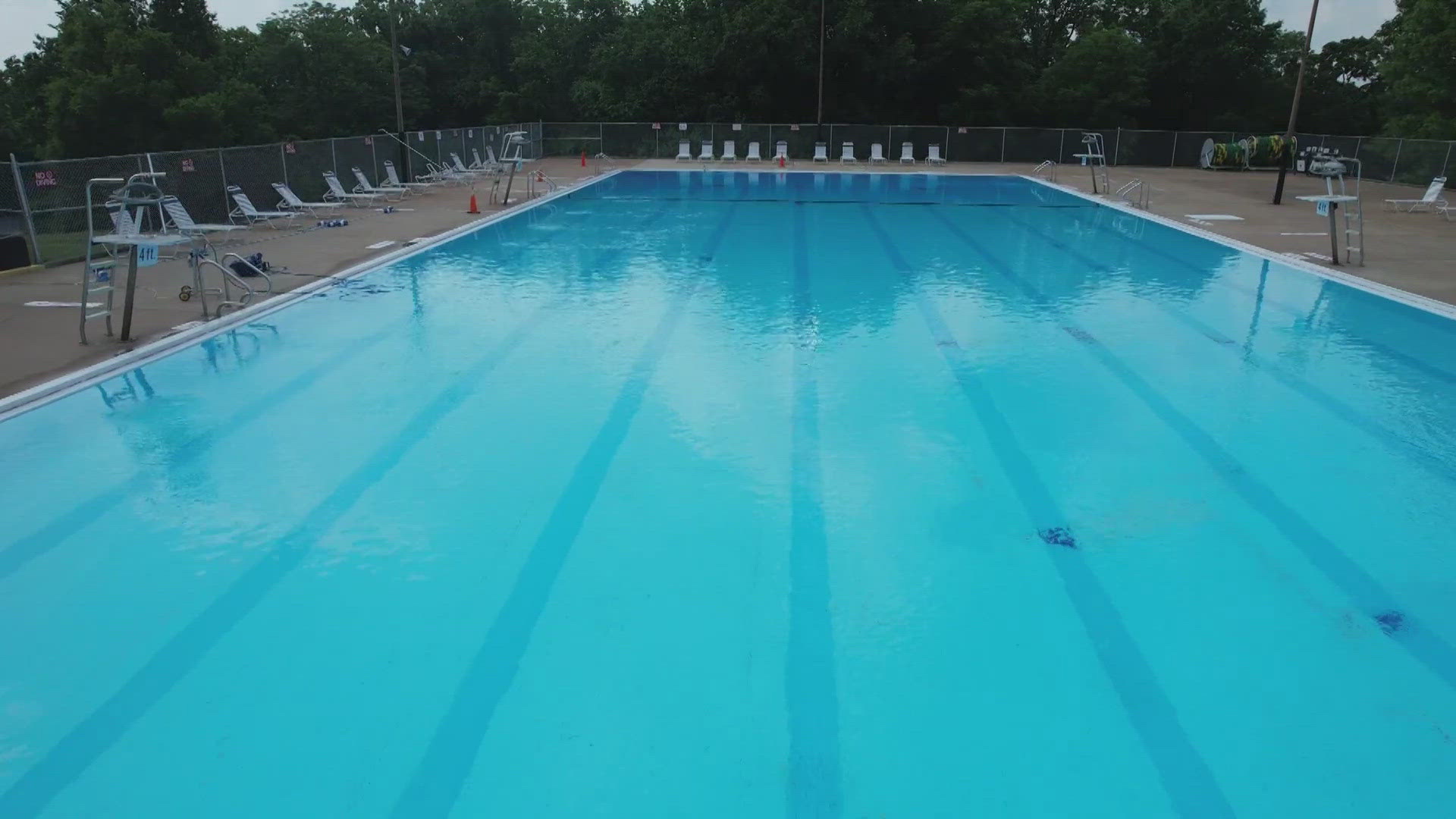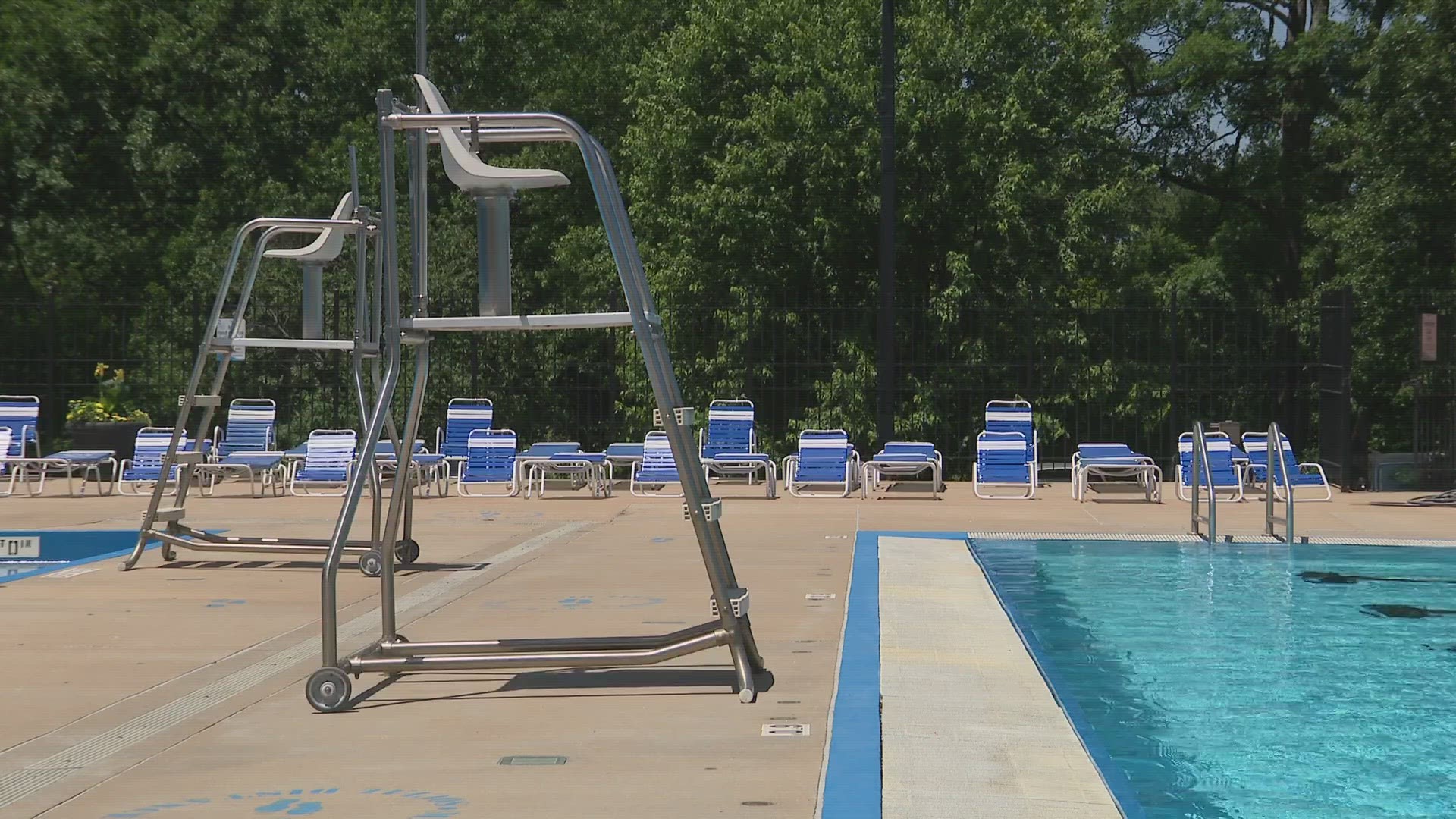ST. LOUIS — As Memorial Day weekend approaches, many families are looking forward to enjoying time at pools, lakes and beaches. But the tragic drowning incidents of two young children at summer camps serve as a stark reminder of the critical importance of water safety.
On July 20, 2022, Olga Mister's world was shattered when her 6-year-old son, T.J., drowned at a St. Louis County-run summer camp.
“It was so preventable," Mister said.
It exposed significant flaws in summer camp safety regulations.
“So there were not enough lifeguards to be watching 50 kids … We found out that the CPR wasn't performed correctly," she said.
Her son’s memories, from his love of karate to his artwork, are now cherished in a room at her home.
“I thought he was going to come home that day," she said.
Every year, 4,500 people die from drowning in the U.S. A substantial number of these deaths are among children, with drowning being the No. 1 cause of death for kids 1 to 4 years old. A new federal report from the CDC shows these deaths are rising.
Behind the stats are victims like Doug Forbes’ young daughter. Roxie drowned five years ago at a summer camp in Los Angeles.
Forbes founded the Meow Meow Foundation, named after Roxie’s favorite stuffed animal. He’s now dedicated to preventing childhood drowning and providing comfort to families suffering.
“Why are we putting 15- and 16- and 17-year-olds in these jobs? You know why? Because we can pay them a low wage, and because they're available help," Forbes said.
He said he believes the national shortage of lifeguards is compounded by inadequate training programs. He pointed out alarming issues with certification processes at some of the industry’s leading organizations.
"The American Red Cross actually has no protections, no quality assurance protections against fraudulent lifeguard and water safety certification," Forbes said. “In my daughter's case, the lifeguard instructor fraudulently certified himself, and he thereafter fraudulently certified upwards of 100 camp counselors as American Red Cross lifeguards.”
Forbes said the American Red Cross instructor worked at the camp where his daughter died for nine years. He said the instructor certified roughly 100 counselors as lifeguards, never failing anyone. He said he fraudulently certified himself as a lifeguard.
Court records show the instructor shortened lessons and skipped American Red Cross-mandated tests. The organization later banned him as an instructor.
“I believe the standard needs to be raised," Forbes said.
Forbes tells the I-Team that another leading training group — the American Lifeguard Association — charges hundreds of dollars for online-only swim assessments and certificates. The company said it provides a “blended learning model.” It requires employers to do in-person training.
“That's shocking," he said.
But critics said the training group is passing off responsibility for a lifesaving job, making money in the process. The organization did not agree to an on-camera interview or phone call.
Forbes said the American Lifeguard Association is an online-based certification agency that works on the honor system to test swimming ability. The organization said while its training does include an online component, it is supplemented by compulsory in-person evaluations by employers to ensure practical proficiency.
The organization’s Bernard J. Fisher II told us in part: “All candidates must successfully demonstrate all required skills… to validate their certification.”
The organization said verification of swimming skills is conducted in person, and no certification is valid without an in-person comprehensive evaluation. Critics said there is no proof that in-person training is enforced.
What’s needed, Forbes said, is better oversight.
“It's about making sure that after you acquire that certification that you are constantly training and retraining," he said.
Forbes and Mister hope their stories will prompt a nationwide call to action.
Earlier this year, T.J. Mister's family and friends held a fundraiser to remember the 6-year-old boy who drowned. Goldfish Swim School wanted to help prevent other children from drowning so they partnered with T.J.'s family and Every Child to give swimmers six months of swim lessons for free at their pool after hearing T.J.'s story. Parents or guardians of eligible children with financial need should apply for a scholarship here if they are four months to 12 years old.
“I'm afraid for the parents who can lose their children," Mister said.
The American Red Cross did not agree to an interview. A spokesperson told 5 On Your Side they offer the gold standard of lifeguard training. The industry-wide problem, water safety experts said, is the lack of regular oversight, testing and training once someone is on the job.
A spokesperson with the American Lifeguard Association, an industry association, told us in an email: “The American Lifeguard Association offers a program nationally recognized by the U.S. Department of Labor under the Fair Labor Standards Act. As the federal Authority Having Jurisdiction (AHJ), the Department has affirmed our compliance with the national standards for lifeguard training and certification. Our blended program ensures that each candidate completes the necessary theoretical components online and demonstrates practical skills in water rescue and first aid through a mandatory in-person assessment. This hybrid approach helps prepare lifeguards to handle emergencies effectively. The coursework, delivered via standardized, instructor-led video instructions, offers flexibility in a self-paced format. It requires ongoing skill development through regular in-service training sessions, adhering to the CDC's Model Aquatic Health Code (MAHC). For the certification to be valid, employers must conduct comprehensive pre-service and in-service training evaluations as mandated by MAHC standards… Employers are also expected to stipulate specific physical requirements for the job and conduct criminal background checks and drug testing..."
A spokesperson with The American Red Cross, which organizes lifeguard certification classes, told us in an email: “The American Red Cross offers a gold-standard, scientifically-based lifeguard training curriculum that is delivered across the country by other entities licensed to use it at their facilities. Our robust, evidence-based aquatics curriculum is developed by our Training Services department in partnership with the American Red Cross Scientific Advisory Council – an external group of nationally-recognized specialists, including a dedicated sub council of aquatics experts who regularly review the curriculum to ensure that the content reflects the latest science and best practices for water safety. Additional details about the curriculum are available on our website: https://www.redcross.org/take-a-class/lifeguarding. Specific lifeguarding topics are addressed in our Lifeguarding Manual and Lifeguarding Instructors Manual. We also have a robust Quality Assurance (QA) department of Red Cross employees that focuses on preserving and promoting high-quality instruction. The Red Cross uses a variety of measures to ensure instructors understand and follow our curriculum and protocols, including comprehensive training and recertification training using standardized teaching resources, tools, and updates. The lifeguard training courses are delivered by other entities (e.g., independent businesses, pool facilities, municipal governments, and camps) that are authorized by contract to use the Red Cross curriculum and program guidelines in their training programs.”
The I-Team’s Paula Vasan spoke with Stephane Rebeck, founder of Backyard Lifeguards, an aquatic safety and private professional lifeguarding company serving residential pools, schools, camps, and aquatic sporting events. They spoke at the Shaw Park Aquatic Center in Clayton. The city is not affiliated with Backyard Lifeguards and has never contracted with the organization. Rebeck, who worked for the city in the early 2000s, outlined water safety "layers of protection" that are universally adopted and promoted by water safety experts and advocates. These safety measures include:
Supervision: Use the buddy system with people who can swim, try to always swim near a lifeguard, and in general never swim alone. At locations without lifeguards, where most drownings occur, designate a capable adult to supervise children swimming, or simply playing outside if there is water around. The supervising adult should not be distracted to socialize, check their phone or perform other tasks. Older kids should not be left in charge of younger kids.
Access: Secure the water. Fences should be at least 4 feet high with vertical bars to prevent climbing. Furniture and storage containers should be kept away from the fence so they can’t be used to climb over. Doors leading to the pool should be locked, or alarmed to signal when a person exits. There are bracelets that children can wear that will alarm at a base location when they are submerged. Teach children that they should never go near water except with an adult’s permission and full attention.
Vest: Evaluate swimming capabilities. Anyone that cannot swim AND cannot touch the bottom should be accompanied in the water by an adult within one step or reach of that child. Or, place the child in an appropriately sized US Coast Guard life vest. Avoid products that state “This is a toy and not a lifesaving device.”
Education: Enroll children (and adults) in swim lessons, and refresh them annually. Don’t count on children who swim only seasonally to remember what they knew the previous year.]
Response: Whatever people think drowning looks and sounds like, it doesn’t. Drowning is swift and silent. Rarely is there any splashing, and an actively drowning person is physically unable to call for help. Any struggle at the surface lasts less than a minute. If a child is missing, check the water first. Post an emergency phone script with the location address near the water.
A spokesperson with the Association of Aquatic Professionals (AOAP), a nonprofit industry association, told us in an email: “Well-trained, qualified lifeguards play a critical role in maintaining a safe swimming environment, preventing accidents, responding to emergencies, and ensuring a safer swim environment. Additionally, lifeguarding offers individuals a unique blend of responsibility, leadership opportunities, and skill building in a work environment that serves a variety of communities making it an ideal job for youth, young adults and even seniors. There are a variety of certifications available for interested candidates. The Association of Aquatic Professionals (AOAP) recommends reaching out to potential employers in their area and ask which certification(s) they accept. Many employers offer certification classes on-site, and some include certification training as part of the employment package at little to no cost. Ultimately, when choosing a lifeguard certification course, AOAP also recommends that you keep in mind that the standard of care in aquatic operations is generally set by the Center for Disease Control's Model Aquatic Health Code (MAHC). The MAHC outlines a variety of standards around lifeguard certification including minimum course content, course documentation and more. Additionally the MAHC specifically states that all courses should include, "physical training of lifeguarding skills include in-water and out-of-water skill practices", final written and practical exams, and that an instructor must be "physically present" for all in-person contact time, skills evaluation and testing. If the course you are considering does not include in-person skills training and testing prior to receiving your certification, be aware that the certification may not be accepted by a future employer and that you may be required to recertify at your own expense. When researching potential employers, the AOAP also recommends that candidates discuss their pre-service (before their first shift) training and their on-going training requirements. These trainings, paid for by the employer, should be clearly outlined to both adequately prepare qualified lifeguard candidates for their job and to keep them ready to prevent and respond to emergencies in their facility.”
AOAP recommends that people interested in becoming a lifeguard:
Reach out to potential employers in your area and ask which certification(s) they accept.
Search for a course that includes live, in-person skills training and testing.
Be prepared to demonstrate your lifeguard skills during the interview process.
Discuss with your future employer how they will complete pre-service training before your first shift and all ongoing in-service training requirements.
Have you been impacted by the lifeguard certification process? The I-Team wants to hear from you. Leave a voice message on 314-444-5231 or email Paula directly at pvasan@ksdk.com.


